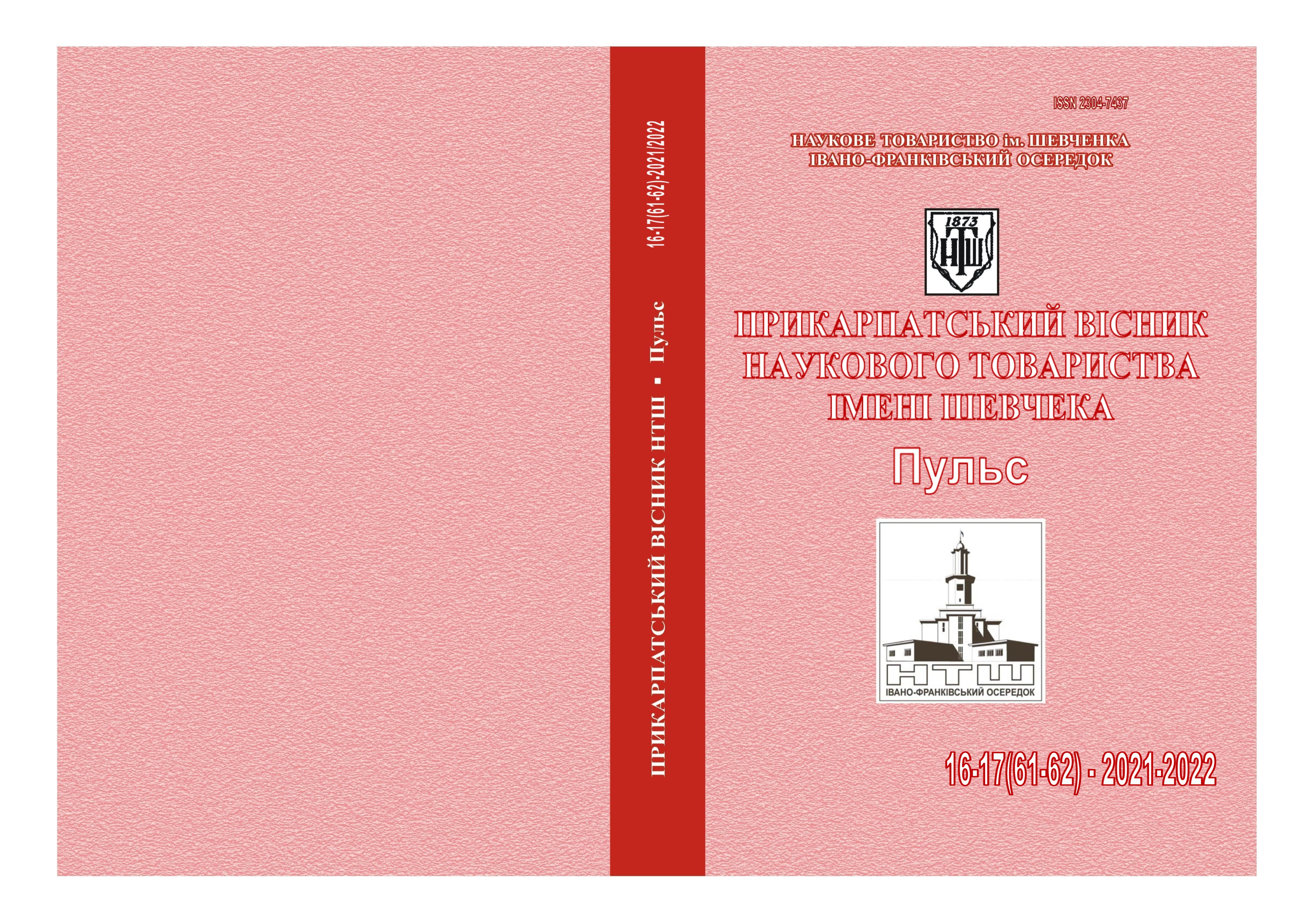THE SOLUBLE ST2 BLOOD LEVEL IN PATIENTS WITH DEPRESSIVE DISORDERS AND ISCHEMIC HEART FAILURE SYNDROME
DOI:
https://doi.org/10.21802/2304-7437-2021-2022-16-17(61-62)-49-56Keywords:
depression, heart failure, ST2.Abstract
Mental disorders are among the leading causes of the global health-related burden. This burden was high across the entire lifespan, for both sexes, and across many locations. Heart failure (HF) persists as an increasing global epidemic; indeed, its estimated prevalence is currently more than 37.7 million people worldwide. ST2 (growth stimulation expressed gene 2) is a member of the interleukin (IL)-1 receptor family. Recent studies revealed that elevated levels of sST2 were associated with adverse outcomes in patients with acute dyspnoea, acute coronary syndromes, and HF. The purpose of this study: to evaluate the relationship between ST2 levels in the blood of patients with heart failure and depression. Material and methods: there were examined 129 patients with depression of varying severity together with the syndrome of HF of ischemic genesis, FC II-IV (NYHA). Depressive disorders were screened using the Hospital Anxiety and Depression Scale, which showed 8 or more points to indicate depressive episodes. The severity of depressive disorders was determined using the Hamilton scale. Transthoracic echocardiography was performed; the plasma content of soluble ST2 (sST2) and the titers of the N-terminal fragment of the brain natriuretic peptide (NT-proBNP) in the blood were determined by ELISA. Statistical analysis was performed using the standard software package "Statistica for Windows 12.0" (StatSoft, Tulsa, OK, USA).Results: The average age of the examined patients was (67.21 ± 11.73) years; among them - 41 women (31.8%). It was noted that the levels of soluble ST2 and NT-pro-BNP in the blood of patients with depressive disorders and HF of ischemic origin increased with decreasing LV EF. According to the Hamilton questionnaire, the majority of patients with HF suffered from depressive disorders of moderate intensity - 96 (74.4%) people. Univariate correlation analysis showed a direct relationship between soluble ST2 levels in the blood of the examined patients and the severity of depressive symptoms (rs = 0.33; p = 0.041); blood content of NT-pro-BNP (rs = 0.51; p = 0.015); resting heart rate (rs = 0.31; p = 0.011) and feedback from LV EF (rs = -0.39; p = 0.043).Conclusion. Patients with depressive disorders and concomitant heart failure of ischemic origin more often showed elevated levels of soluble ST2 molecule in the blood, which depend on the intensity of depression and impaired myocardial contractile function.
References
GBD 2019 Diseases and Injuries Collaborators. Global burden of 369 diseases and injuries in 204 countries and territories, 1990-2019: a systematic analysis for the Global Burden of Disease Study 2019. Lancet. 2020;396(10258):1204-1222
COVID-19 Mental Disorders Collaborators. Global prevalence and burden of depressive and anxiety disorders in 204 countries and territories in 2020 due to the COVID-19 pandemic. Lancet. 2021;398(10312):1700-1712
Ziaeian, B, Fonarow, GC. Epidemiology and aetiology of heart failure. NatRevCardiol. 2016;13(6):368-378
Freedland KE, Carney RM, Rich MW, Steinmeyer BC, Skala JA, Dávila-Román VG. Depression and Multiple Rehospitalizations in Patients With Heart Failure. Clin Cardiol. 2016;39(5):257-262
Fang Qiujue, Wang Zhaojun, Yuan Wei, Ding Shu, Wang Zhongqun. Correlation between soluble ST2 and coronary artery complex lesions and their severity. Chinese Journal of Clinical Pharmacology and Therapeutics. 2021; 26(3): 278-284
Mc Donagh TA, Metra M, Adamo M, Gardner RS, Baumbach A, Böhm M, et al. 2021 ESC Guidelines for the diagnosis and treatment of acute and chronic heart failure. Eur Heart J. 2021;42(36):3599-3726
Annunziata MA, Muzzatti B, Altoè G. Defining hospital anxiety and depression scale (HADS) structure by confirmatory factor analysis: a contribution to validation for oncological settings. AnnOncol 2011; 22: 2330-2333
Diez J. Serumsoluble ST2 as a biochemical marker of acuteheart failure. J. Am. Coll. Cardiol. 2008;52:1466–1467
Boisot S, Beede J, Isakson S etal. Serial sampling of ST2 predicts 90-day mortality following destabilized HF. J. Card. Fail. 2008; 14(9):732–738
Bayes-Genis A, deAntonio M, Galán A, etal. Combineduseofhigh-sensitivity ST2 and NT-pro BNP toimprovethepredictionofdeathinheartfailure. Eur J HeartFail 2012; 14: 32-38
Xu SD, Su GH, Lu YX, Shuai XX, Tao XF, Meng YD, Luo P. Elevated-soluble ST2 and depression in creased the risk of all-causemortality and hospitalization in patients with heart failure. Int Heart J. 2014;55(5):445-450

